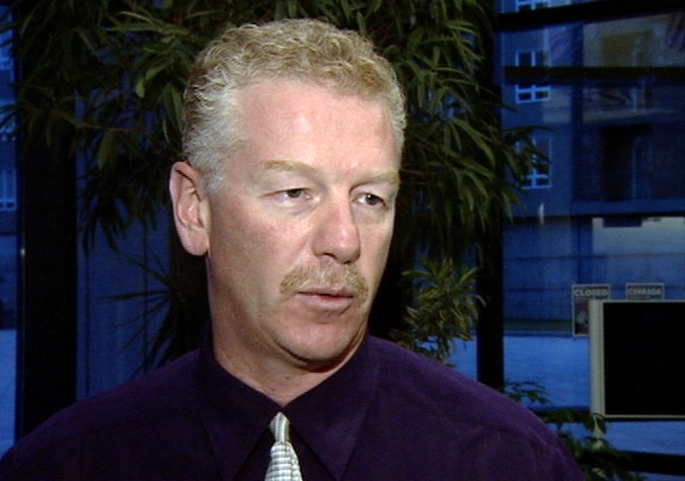[ad_1]
ST. GEORGE — At first glance, Utah’s 2.2% unemployment rate in October may appear to be a good thing. It’s lower than it was pre-pandemic, after all.

“In fact, it’s the lowest in our recorded history,” said Mark Knold, chief economist at the Department of Workforce Services. “As people continue to fill jobs, the pool of idle, available labor keeps shrinking.”
According to the Utah Department of Workforce Services’ report released in November, there’s only some 34,700 unemployed people in the state. That could put a damper on growth because, at the same time, Utah’s October private sector employment recorded a two-year expansion of 4.9%, according to the report.
Transportation is among the leaders in jobs growth. But with fewer workers to fill more positions, Knold said, “the labor market has become extremely tight,” which could be one of the reasons why restaurants, retail stores and transportation companies, like Parke Cox Trucking in St. George, can’t find enough help.

Pandemic shortages and supply chain challenges persist
Parke Cox Trucking, Inc. has delivered goods to major local distribution centers for 75 years. During that time, co-owner and CEO Don Cox said, hiring drivers has proved challenging. But since the pandemic hit, it’s become even more difficult.
“Our whole industry nationwide can’t seem to hire enough drivers,” Cox told St. George News. “I think some people don’t want to work, but those low unemployment rates might as well be zero.”
“And every aspect of our industry has been affected by supply chain problems,” added Parke Cox Trucking COO Brecken Cox. “We get fewer applications from workers in Utah.”
That’s why, Brecken Cox said, they’ve expanded their hiring range from Utah to Nevada, California, Arizona and Colorado. They’re trying other measures to draw more interested parties to work for Parke Cox Trucking, as the field becomes more competitive.
“Many drivers are shying away from the long-haul deliveries of the past,” Don Cox said. “Now, we’re trying to do more short-run deliveries, which means that drivers will be able to spend more time at home, with their families. We’re also offering higher wages.”

With the cost of doing business rising, and backlogs for new trucks and trailers climbing to one year, Cox said his company is focusing their efforts on keeping their existing clients happy, rather than expanding.
“If we had more people, and a larger fleet, we could go chasing the almighty dollar,” he said. “But we’ve got a good reputation for being on time. We’re going to make sure that doesn’t change, no matter how hard it gets.”
“We’re all doing the best we can,” he added.
Musical Chairs
Of course, it may not be enough. Snapshots of the Washington County economy show that in 2020, the most current report available, there were 75,007 people employed. That leaves only 4,201 people who are eligible and looking for work. Iron County saw 23,879 people employed, leaving only 1,115 looking for work. So, there just isn’t much room to grow, Knold said.

“We’re seeing lots of opportunity quitting,” Knold said. “They’re quitting because a better opportunity opens up. Maybe they’ve been offered more pay, or better working conditions.”
Cox offered a similar take, saying that his company has hired people who may not even show up for their first day on the job.
“Others show up for one day, then they disappear,” he said. “I think it has to do with the competitive nature of the business. A driver can pick up the phone and call almost any company in the area and get a job.”
A few of Utah’s major private-sector industry groups posted net two-year job gains, led by trade, transportation and utilities with 20,900 jobs, professional and business services with 15,500 jobs, construction with 10,800 jobs and manufacturing with 7,900 jobs.

Those numbers differ in Washington County, where trade, transportation and utilities jobs fell by 462. In contrast, Iron County saw 174 new jobs in that same group. Both counties saw growth in construction, with 943 new jobs in Washington County, and 168 in Iron County.
“Which creates other challenges,” Knold said. “It’s hard to draw new workers to Washington County, because of the rising cost, and short supply, of housing. And it’s hard to increase those numbers, because those workers can’t afford to move here. It’s a catch-22.”
Leisure and hospitality services have been hit hard, though. In Washington County, leisure and hospitality jobs fell by 715; in Iron County, they fell by 277. The reason, Knold said, may be that workers are less likely to take jobs where they interact with people face-to-face, “which increases their chances of contracting COVID-19.” That, and there are opportunities to get higher-paying jobs in other industries.

“What we have right now,” he said, “is a game of musical chairs. But there are more chairs than players.”
A New Resource
For those interested in following the latest trends and developments, the St. George Area Chamber of Commerce launched a new local business and economic dashboard that provides “critical, real-time economic data.”
Data topics include workforce, employment, industry and housing and consumer spending, to name a few. The data on the dashboard is updated as new information is released from sources such as the Bureau of Labor Statistics, the census, various state and local agencies, and third parties like Experian.
Chamber President and CEO Don Willie called the dashboard a game changer for chamber members and other economic contributors in the community, as it’s open to anyone who’s interested in taking a peek.
“The St. George Area Chamber of Commerce believes in democratizing this type of data,” Willie said in a press release. “So, business, government and community leaders can make decisions with the most accurate information possible.”
Those interested in learning more should visit the St. George Area Chamber of Commerce site.
Copyright St. George News, SaintGeorgeUtah.com LLC, 2021, all rights reserved.
[ad_2]
Read More: Utah reports record low unemployment rate; is that a good thing?
